Keynote Speakers - Fifth ISSESR
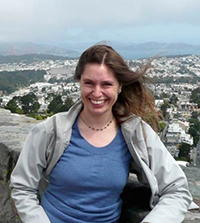
The Role of Rapid Evolution in Responses to Stock Enhancement and Environmental Change
Dr. Marissa Baskett
Dr. Marissa Baskett is an Associate Professor in Environmental Science and Policy at the University of California, Davis. Her work focuses on mathematical modeling to understand and quantify ecological and evolutionary responses to environmental variability and change in space and time.
Dr. Baskett holds a Ph.D. in Ecology and Evolutionary Biology from Princeton University (USA). In an ecological context her work explores the drivers of ecological resilience to environmental change, and in an evolutionary context she explores the potential for rapid evolutionary responses on ecological time scales to affect population dynamics. To bridge basic and applied science, she focuses on cases of human-driven global environmental change such as fisheries, artificial propagation, and climate change.
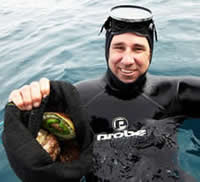
Commercial sea ranching of abalone in Flinders Bay, Western Australia
Mr. Brad Adams
Brad Adams is a third generation fisherman who has been involved in the abalone industry all his life. His father, Terry, founded the Western Australian commercial abalone diving industry in Augusta in the 1960’s. For 12 years Brad worked as commercial abalone diver along Western Australia’s south coast. In addition to his significant knowledge about wild abalone Brad has extensive abalone aquaculture experience. He worked in Tasmania after completing a post graduate degree in Aquaculture in 1992 where he conducted early research on culturing abalone in cages on long-lines.
Since 2000, he has been focused on abalone research and development in WA involving both shore-based and sea-based culture systems. In 2009 he and partners founded Ocean Grown Abalone Pty Ltd (OGA), a commercial aquaculture business working on the development of greenlip abalone ranching technology in Flinders Bay near Augusta. OGA have successfully developed artificial abalone reef modules that can be used to build suitable habitat in locations where hard natural structure is limited. These artificial reefs are then seeded with juvenile abalone that are then grown to maturity. The success of extensive trials has led to OGA commercializing the ranching technology. Reef modules have been deployed on a commercial basis since May 2014 with the first abalone harvest due to commence in early 2016. Brad’s practical abalone fishing and aquaculture background and formal science training was complemented with formal business training via completion of an MBA in 2010. Brad was a Director of the Western Australian Fishing Industry Council (WAFIC), 2009-2011 and Chairman from 2011-2013.
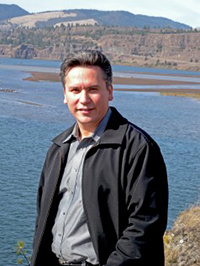
Using indigenous fishing rights to stimulate restoration of fish populations: A case study of salmon populations in the Columbia River Basin (specific topic to come)
Mr. Paul Lumley
Babtist 'Paul' Lumley is Executive Director of the Columbia River Inter-Tribal Fish Commission (CRITFC), and has an extensive history working with Northwest US tribes on salmon issues, particularly in the Columbia River Basin. He previously spent 17 years with CRITFC working on biological issues associated with power stations, and has also assisted in fund raising and establishing a grant program for the four Columbia River treaty tribes. Mr. Lumley has a wide-ranging background on issues that directly impact American Indians, Alaska Natives, and Native Hawaiians. He has worked directly with tribal governments, tribal consortia, virtually all US federal agencies impacting Indian Country, and Native American national and regional organizations throughout his professional career. CRITFC as an organization is dedicated to restoring the salmon runs to their historical range and protecting the tribes' treaty-reserved fishing rights. This entails efforts, co-management, and coordination throughout the Columbia River basin, a basin that is approximately the size of France and spans five states and one Canadian province. Numerous dams were constructed in the Columbia River basin, which has severely impacted salmon runs and devastated tribal villages.
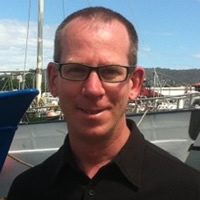
Increasing production in fully exploited fisheries
A/Prof. Caleb Gardener
A/Prof. Caleb Gardner is a fisheries scientist and resource economist. He is the Director of the partnership between UTAS and the Tasmanian State Government at the Institute of Marine and Antarctic Research in Hobart. Caleb conducts applied research across a broad spectrum of topics with the core aim of improving the management of marine resources. Most research has been on high value, coastal invertebrate fisheries.
Australia's high value fisheries tend to be described as “fully exploited” which is commonly interpreted as meaning they are at their peak of both production and economic yield. This can be misleading as there are often substantial opportunities to improve both yield and value of fisheries through changes in management systems. These opportunities include simple tuning of regulations such as size limit controls, using bioeconomic modelling to improve harvest strategies, and enhancing productivity of stock.
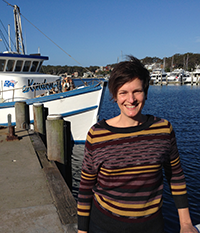
How Can We Evaluate the Social Contribution of Fisheries?
Dr. Kate Barclay
Dr. Kate Barclay is an Associate Professor in the Faculty of Arts and Social Sciences at University of Technology, Sydney (AU). Her work focuses on the social aspects of fisheries.
Dr. Barclay received her Ph.D. from The Australian National University. Since the late 1990s she has researched the sustainable development of tuna resources in the island Pacific in the context of changing governance systems and globalization. Current projects include multidisciplinary work to evaluate the social and economic contributions fisheries make to coastal communities in New South Wales, and a governance analysis of the supply chain of beche de mer from Papua New Guinea to markets around Asia. Kate has been commissioned to do research for organizations including: WWF, Greenpeace, the United Nations Development Program, the European Parliament, and the Pacific Islands Forum Fisheries Agency, the World Bank, and the David and Lucile Packard Foundation.
Kate is a member of the Scientific and Technical Advisory Committee of the International Pole and Line Foundation, which promotes the development of socially and ecologically responsible tuna fisheries. She is also a member of the International Advisory Board of the BESTTuna project on Benefiting from Innovations in Sustainable and Equitable Tuna Management in the Coral Triangle and Western Pacific, based at the University of Wageningen in the Netherlands. She is on the editorial committees of journals Conservation and Society, and Portal: Multidisciplinary Journal of International Studies, and is a member of the Maricultures Environmental Research group at the Sydney Environment Institute.
Other Keynotes are speaking on fishery restoration an conservation at the 2015 ASFB conference, including:
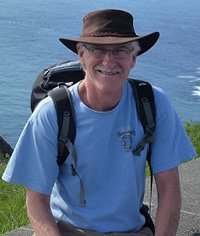
Using ecohydraulic recruitment guilds to support environmental flow management and promote the recovery of native fish populations
Dr. Martin Mallen-Cooper
Dr Mallen-Cooper has 30 years’ experience in fish ecology through research and management, with 10 years in government and 20 years as a consultant. His research on the ecology of fish migration, fish behaviour and swimming ability led to the first successful fishways for native fish in Australia. Much of his work is aimed at fish passage and flow management projects where conceptual models of fish populations and fish migration are used to form ecological objectives, which are then used to develop practical management guidelines.
Dr Mallen-Cooper has worked on over 210 fish ecology and fish passage projects. Clients have included state and federal government agencies, water authorities, engineering firms, local councils, and community groups; mainly in Australia, but also sites in Laos, Cambodia, Bangladesh, China, and New Zealand. Dr Mallen-Cooper has published widely in national and international journals, workshops, and symposia, as well as in more popular publications such as in New Scientist and Australasian Science.
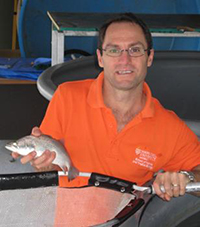
Spyglass into aquatic biological diversity - use of environmental DNA (eDNA) to detect rare and invasive species
Prof. Dean Jerry
Prof. Dean Jerry is Head of Aquaculture and Fisheries at James Cook University (JCU) and has conducted research into the genetics of Australian aquatic fauna for 20 years. His research group at JCU is active in the development of translational genetic technologies to the aquaculture industry and that are applicable to aquatic biodiversity management. Recently his group has developed and successfully tested environmental DNA (eDNA) technology in the detection of invasive aquatic pests, threatened species like sawfish and disease causing pathogens. In his presentation he will highlight the power of eDNA to detect aquatic organisms in a variety of environments, along with some of the pitfalls that need to be considered when conducting eDNA surveys.